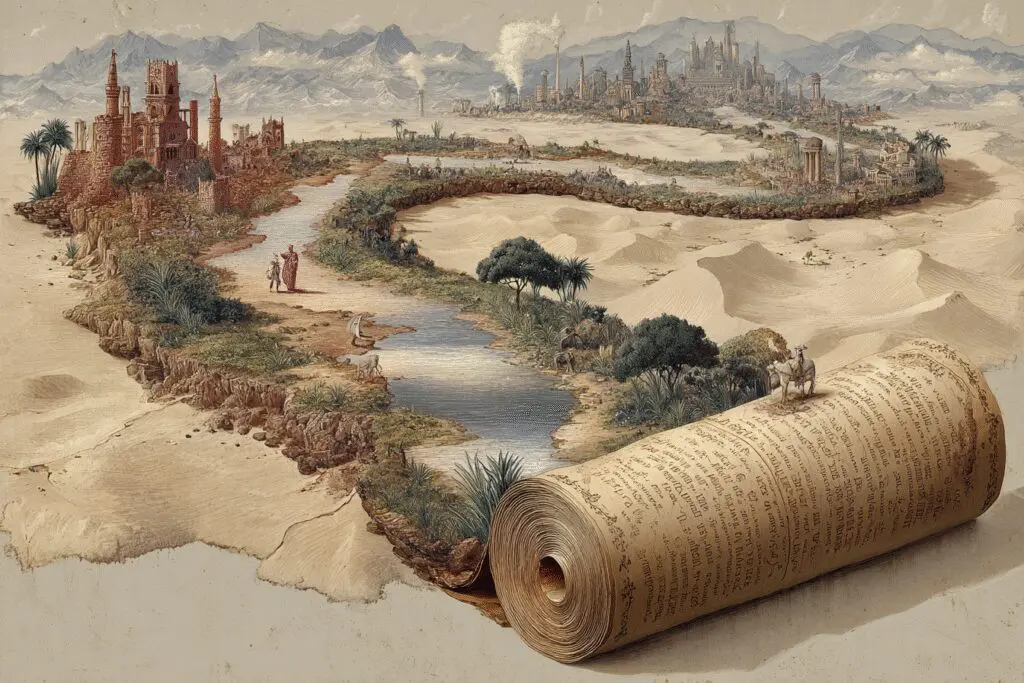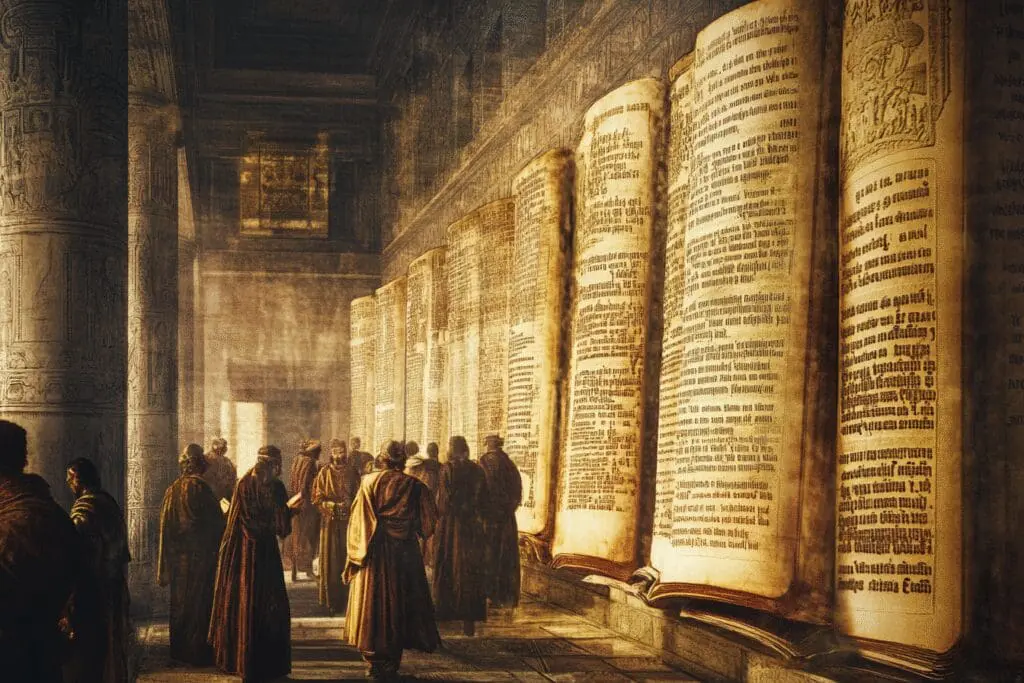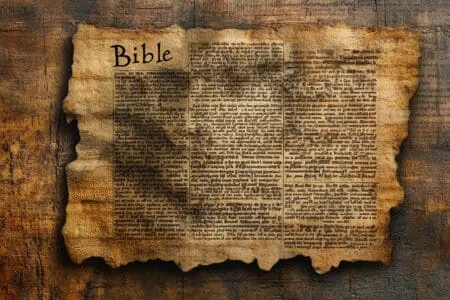Spoiler alert: it wasn’t written over a weekend. Not even close. When you ask the question, “How long did it take to write the Bible?” you’re not asking about one book. You’re asking about a whole library—a collection of scrolls and manuscripts penned by dozens of authors over a staggering period. The simplest answer is that it took around 1,500 years from start to finish.
But that simple answer feels like a cheat, doesn’t it? It’s like saying it takes a long time to build a city. True, but it doesn’t tell you about the planning, the different neighborhoods, the centuries of history buried under the streets. The real story is so much more fascinating. It involves kings, prophets, fishermen, and scholars, scattered across different continents and empires. It’s a story of oral traditions, political turmoil, and profound faith, all woven together over more than a millennium. Let’s dig into what that 1,500-year timeline actually looks like.
More in Bible Category
How Long After Jesus Died Was the Bible Written
Key Takeaways
- It’s a Library, Not a Single Book: The Bible is a collection of 66 separate books (for Protestants) or more (for Catholics and Orthodox Christians), written by over 40 different authors.
- A Massive Timeline: The entire writing process spanned approximately 1,500 years, from roughly 1400 B.C. to A.D. 100.
- The Old Testament Took the Longest: The writing of the Old Testament alone covers more than 1,000 years, starting with Moses and concluding with the prophet Malachi.
- The New Testament Was Quicker: The New Testament was written over a much shorter period, roughly 50-60 years, by the apostles and their associates.
- It Wasn’t a Linear Process: Books weren’t written in the order they appear in the Bible. It was a complex process of writing, collecting, and organizing these sacred texts over many centuries.
So, Where Does the 1,500-Year Figure Even Come From?
When you first hear “1,500 years,” it sounds like a made-up number. How could anyone track something for that long? But it starts to make sense when you break down the Bible into its two major sections: The Old Testament and the New Testament. They weren’t written back-to-back. There was a huge gap in between.
Think of it this way: the gap between the last book of the Old Testament being written and the first book of the New Testament is about 400 years. That’s almost twice the entire history of the United States as a country. During those four centuries—often called the “silent years”—no new scripture was written. It was a period of waiting and anticipation for the Jewish people. So, the timeline is really two distinct, concentrated periods of writing separated by a long pause.
The Old Testament: The Foundation Spanning Centuries
The Old Testament is the story of a nation, Israel, and its relationship with God. This wasn’t a story that could be told quickly. It unfolded across deserts, kingdoms, and periods of exile.
Most scholars believe Moses wrote the first five books of the Bible, known as the Torah or the Pentateuch, around 1400 B.C. These books cover everything from the creation of the world to the laws that would govern the new nation of Israel. This is our starting line.
The finish line for the Old Testament is around 400 B.C., with the prophet Malachi. Between Moses and Malachi, you have a massive span of history. That’s a full millennium of writing.
- Early History and Law: Genesis, Exodus, Leviticus, Numbers, Deuteronomy (c. 1446-1406 B.C.)
- Historical Books: Joshua, Judges, Ruth, 1 & 2 Samuel, 1 & 2 Kings, etc. (c. 1400-450 B.C.)
- Wisdom and Poetry: Job, Psalms, Proverbs, Ecclesiastes, Song of Solomon (c. 1000-450 B.C.)
- Prophetic Books: Isaiah, Jeremiah, Ezekiel, Daniel, and the minor prophets (c. 750-430 B.C.)
You can see how different genres were being written at different times, often overlapping. King David was writing Psalms around the same time historians were documenting the lives of the kings. It wasn’t an assembly line; it was a living, breathing collection of national and spiritual records.
The New Testament: A Flurry of Activity in a Single Lifetime
After that 400-year gap, things kicked into high gear. The New Testament covers a much shorter, more focused period: the life of Jesus Christ and the birth of the Christian church. The entire New Testament was written within a single lifetime, roughly between A.D. 45 and A.D. 100.
I remember first learning this and being shocked by the contrast. A thousand years for one part, and about 60 years for the other. It makes sense, though. The New Testament authors were eyewitnesses or close associates of eyewitnesses to the events they described. They were writing with a sense of urgency, wanting to preserve the story of Jesus and spread his teachings.
The Apostle Paul was one of the earliest and most prolific writers. His letters to the various churches he founded, like the one in Rome or Corinth, make up a huge chunk of the New Testament. The Gospels—Matthew, Mark, Luke, and John—were written to provide a comprehensive account of Jesus’s life and ministry. Finally, the Apostle John wrote the book of Revelation near the end of the first century, closing out the biblical library.
But Who Decided Which Books Got In?
This is where it gets really interesting for me. It’s one thing for people to write a bunch of scrolls. It’s another thing entirely for them to be collected and recognized as “the Bible.” This process is called “canonization,” and it didn’t happen overnight. It wasn’t like one day a council got together and voted on a final list.
It was more of an organic process that took centuries. For the Old Testament, Jewish scribes and scholars had a general consensus about which books were divinely inspired long before Jesus was born. They had criteria: the book had to be written by a prophet or someone with divine authority, it had to be consistent with other scriptures, and it had to have been accepted by the Jewish community for generations.
The Council of Jamnia: A Myth?
You sometimes hear about a “Council of Jamnia” around A.D. 90 where Jewish leaders supposedly finalized the Old Testament. However, many scholars today believe this is an overstatement. The evidence suggests the Old Testament canon was largely settled much earlier, and any discussions at Jamnia were more about confirming what was already widely accepted.
So How Did the New Testament Come Together?
The process for the New Testament was similar but happened more quickly. The early churches began to circulate the apostles’ writings. They intuitively recognized which texts carried the authority of Jesus’s direct disciples. I imagine it being like a band’s early fans knowing which recordings are authentic and which are bootlegs. They just knew.
Of course, there were debates. Some books, like Hebrews and Revelation, were debated for a while in certain regions. But over time, a core collection gained universal acceptance. The criteria were key:
- Apostolic Origin: Was it written by an apostle or a close associate of an apostle (like Mark, who worked with Peter, or Luke, who traveled with Paul)?
- Universal Acceptance: Was the book widely accepted and used by churches across the known world?
- Doctrinal Cohesion: Did its message align with the foundational teachings about Jesus that had been passed down from the very beginning?
By the late 4th century, the New Testament canon as we know it today was overwhelmingly recognized. Athanasius of Alexandria, in his Easter letter of A.D. 367, listed the 27 books of the New Testament, and this list was reaffirmed at councils like the Council of Hippo (A.D. 393). More information on this can be found in academic resources, such as those provided by Princeton Theological Seminary’s library on early church history.
What Were They Actually Writing On?
We’re so used to paper and digital text that it’s hard to imagine the physical labor involved in writing the Bible. Nobody was typing this stuff out. The materials they used directly influenced how the texts were preserved and passed down.
From Stone to Papyrus
Some of the earliest writings in the Bible, like the Ten Commandments, were famously inscribed on stone tablets (Exodus 31:18). This was durable but obviously not practical for a 1,000-page book.
For the most part, biblical authors used two primary materials:
- Papyrus: This was the ancient world’s version of paper, made from the papyrus reed that grew along the Nile River. Sheets were created by pressing strips of the plant together, and these sheets could be glued together to form long scrolls. It was relatively cheap but brittle, especially in damp climates. Much of the New Testament was likely first written on papyrus.
- Parchment: This was made from the treated skin of animals like sheep or goats. It was far more durable than papyrus but also way more expensive. You could write on both sides, and it held up much better over time. Important documents and later copies of the scriptures were often made on parchment.
The shift from scrolls to the codex (an early form of the book with pages you could flip) in the first few centuries A.D. was a game-changer. It made it much easier to find specific passages and to protect the writings.
How Can We Trust Copies Made Over 1,500 Years?
This is the question that always nagged at me. If the Bible was copied by hand for centuries, how do we know it wasn’t changed? It’s like that telephone game you play as a kid, where the message gets completely garbled by the end.
The reality, however, is that the scribes who copied the scriptures were incredibly meticulous. This wasn’t just another job for them; it was a sacred duty.
The Meticulous Work of Jewish Scribes
For the Old Testament, groups of scribes, like the Masoretes (active between the 7th and 10th centuries A.D.), developed a complex system to ensure accuracy.
- They counted every single letter, word, and paragraph in a book.
- They knew the middle letter of a scroll and the middle word.
- If a single mistake was found on a new copy, the entire scroll was often destroyed and they started over.
This painstaking process meant that the Old Testament text was preserved with remarkable accuracy. We know this because of the discovery of the Dead Sea Scrolls in 1947.
The Dead Sea Scrolls: A Stunning Confirmation
The Dead Sea Scrolls were a collection of ancient Jewish texts hidden in caves around 2,000 years ago. Among them were copies of almost every book in the Old Testament, dating back to a time 1,000 years before the oldest copies we previously had.
When scholars compared these ancient scrolls to the medieval texts copied by the Masoretes, they were stunned. The texts were virtually identical. The Dead Sea Scrolls proved that the Old Testament had been transmitted with an almost unbelievable degree of precision.
What About the New Testament?
For the New Testament, our confidence comes from a different place: the sheer volume of manuscripts. We have over 5,800 surviving Greek manuscripts of the New Testament, some dating to within a generation or two of the original authors. This massive number of copies allows scholars to cross-reference them, identify any minor copying errors (called variants), and reconstruct the original text with a very high degree of certainty. No other document from the ancient world comes even close to this level of manuscript evidence.
So, while the writing of the Bible was a long and complex process, the transmission of it was a story of incredible care and preservation. The 1,500-year journey from the first words penned by Moses to the final book of Revelation is not just about how long it took to write the Bible, but about the incredible chain of people who dedicated their lives to preserving it for the next generation. It’s a human story as much as it is a divine one.
Frequently Asked Questions – How Long Did It Take to Write the Bible

When and how was the canon of the Bible officially recognized?
The canon was recognized by the early church mainly in the late 2nd century, based on criteria such as apostolic authorship, consistency, widespread use, and the work of the Holy Spirit, and formalized in church guides later on.
How did the Old Testament develop over the centuries?
The Old Testament was developed over about a thousand years, from around 1400 BC to 400 BC, including historical, poetic, wisdom, and prophetic writings that tell the story of God’s covenant with Israel.
Who were the main contributors to the writing of the Bible?
Approximately 40 different writers from various backgrounds, including kings, prophets, fishermen, doctors, and shepherds, contributed to the Bible.
Why is the lengthy process of writing the Bible significant to understanding its divine origin?
The long process, spanning many centuries and involving diverse authors, demonstrates divine guidance, maintaining a consistent story of God’s plan for salvation that only a divine source could oversee.
How long did it take to write the entire Bible?
The Bible took about 1,500 years to write, beginning around 1400 BC and ending around 95 AD.




